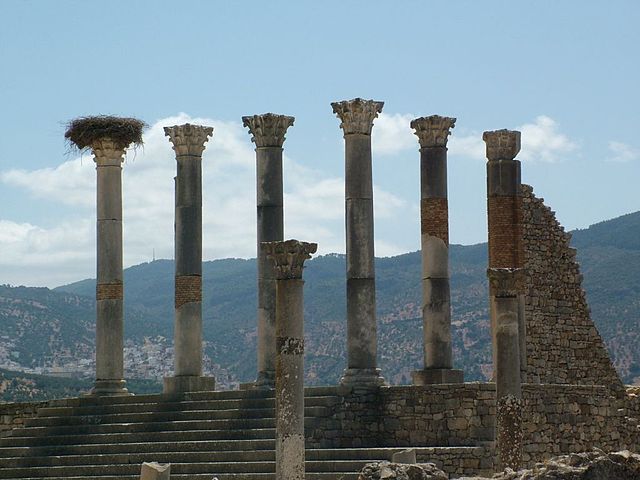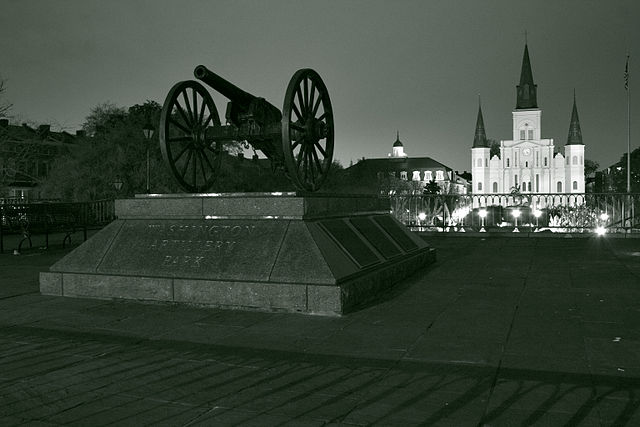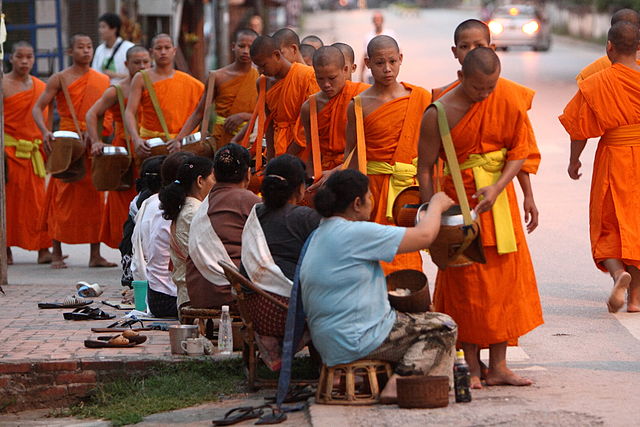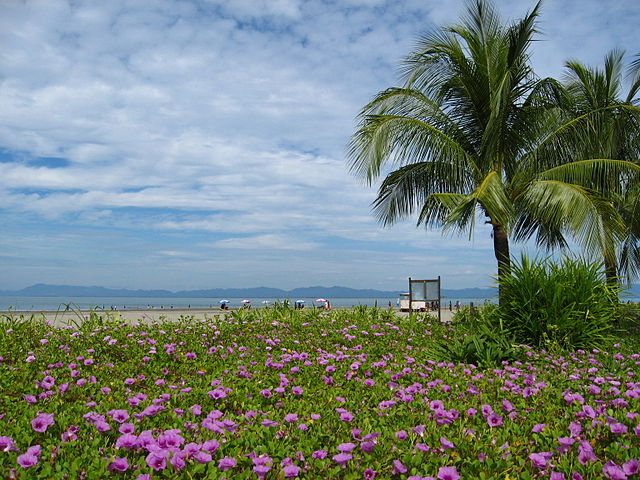Done Paris? Bored with Marseille? Feel like Avignon is so last year? Fear not, Francophiles. There are countless places on this big planet where you can immerse yourself in the best of all things French – the cuisine, the culture, or the language – without stepping foot on the motherland.
During the height of its empire, France controlled close to 5 million square miles of land, nearly 8% of the earth’s surface. While most of France’s former lands have gone on to establish their own identity, many still bare the indelible marks of French influence (some more than others of course). For a dose of French culture or to immerse yourself in the language without the trip to France, visit one of these French-influenced destinations.
[social]
Morocco

For several decades in the early 1900’s, Morocco was a protectorate of France. While the country has been independent for over 50 years, the influence of France is still apparent, especially in the language. The official language of the country is Arabic, but France is so widely spoken that it is the second most-popular foreign language and is generally the one spoken by government officials and in business transactions.
The country still has strong commercial ties to France, newspapers are written in French, the language adorns street signs and shop windows, and French films play alongside Arabic ones in the country’s theatres.
French influence in other aspects of the culture is more subtle. Moroccan cuisine, for example, follows North African traditions but is often a bit more sophisticated, using French cooking techniques or richer sauces created in the French style. Other North and West African countries where French is still widely spoken include Tunisia, Cote D’Ivoire, Senegal and Algeria.
>> Find airfare to Morocco and read our Eco-Travel Guide to Morocco
New Orleans, Louisiana, USA

Americans don’t have to travel very far to feel as though they’ve been transported to a French town. While the modern culture of New Orleans reflects many different influences (African, Cajun, Spanish, Creole, and French), there’s no denying the impact the French had on the development of the city when it was part of France’s “New France” colony in North America during the 17th and 18th centuries.
That influence is particularly apparent in the aptly named French Quarter, where trellised buildings built by early French settlers call to mind the streets of Paris. Many of the street signs are in French – 7% of the population speaks French – and French cafes line the streets. Creole and Cajun food both have their roots in French (and Spanish) cooking, and of course, the most famous of New Orleans’ pastries, the beignet, was created by the French.
And though it has mostly devolved into a raucous drunken party, Mardi Gras (which translates to Fat Tuesday in the French language) has its roots in French Roman Catholic traditions. New Orleans isn’t the only pocket of French culture in Louisiana. Other towns around the state bear French names (Baton Rouge and Dulac are two) and still retain a bit of their former French identity.
>> Book flights to New Orleans, find hostels in New Orleans, check out our New Orleans Indie Travel Guide, and read Don’t Wear Black to Cafe du Monde (and Other New Orleans Travel Tips)
Madagascar, Mauritius, Réunion and the Seychelles

In the late 1600’s, France began exploring the area off the southeast coast of Africa in the Indian Ocean. The country established posts on the islands now known as Mauritius and Réunion, briefly controlled the Seychelles, and then, in the late 19th century, invaded Madagascar, made the island nation a French protectorate, and controlled it until 1960, when it became independent. Mauritius and the Seychelles are also independent nations now – Réunion remains an overseas department of France – though the language is still widely spoken on all of the islands (it’s the official language on Réunion).
On each of the islands, despite the prevalence of the French language, the cuisine reflects a whole host of different influences. There are some French traditions used in cooking, but you’ll also find Indian, Chinese & African characteristics too, especially in the popularity of fish and rice, and in the local herbs and spices used to flavor each dish.
>> Find airfare to the Seychelles or plan your trip to Madagascar
Luang Prabang and Vientiane, Laos

At first glance, Laos looks like it couldn’t be more different from France, and in many respects that is true. A quick look around the towns of Luang Prabang and Vientiane will reveal lush green fields of rice, Asians zipping around on scooters and motorbikes, and monks in brightly-colored robes heading solemnly to gilded Buddhist temples. But a long history with France has left its mark on the oft-forgotten country.
You may not hear much French spoken here, and the culture is decidedly Lao, but it’s interesting to see the small ways that France is still present in the lives of the people, most notably in the cuisine, in the baguettes sold on every corner, in the occasional glimpse of European-style architecture, and in the faces of the many French ex-pats who still reside in the country.
And Laos isn’t the only country in Southeast Asia to retain some effects from France’s rule. Both Vietnam and Cambodia were once colonies of the empire.
>> Book a hostel in Vientiane, find a Laos adventure tour, and read Trading Places: Laos
Saint Martin, Caribbean

The Island of Saint Martin (called Sint Maarten on the Dutch side) is the smallest land mass controlled by two countries. One side is part of the Netherlands Antilles and the other belongs to France as an overseas department of the country. The island was settled by the French in the late 1600’s, changed hands several times between the Dutch, Spanish, and English and then half was returned to France, with the other half given to the Dutch, in the early 1800’s.
If it weren’t for the French flags flying everywhere you look, you’d have no reason to think – at first glance anyways – that Saint Martin was so heavily influenced by the French. The beaches are soft and white and the buildings low slung and painted in the pale colors found on other Caribbean islands.
But when you look a little closer you’ll see that streets signs and shop names are all printed in French – it’s still the official language of the area – and you’ll find no shortage of restaurants serving an eclectic mix of Caribbean and French cuisine.
It’s not exactly the French Riviera (the French side of the island is relatively undeveloped compared to the Dutch side) but it is one French-inspired beach vacation that doesn’t require an 8-hour flight from the US. Other Caribbean islands with former ties to France include St. Lucia, Haiti, and Martinique.
>> Search flights to Saint Martin and plan your trip to Saint Martin
French Polynesia

Made up of several group of islands (over 130 islands in all) in the Pacific Ocean east of Australia, French Polynesia became a French protectorate at the end of the 19th century. It’s now an overseas collectivity and French is the official language, though Polynesian languages are also widely spoken. Despite its governmental and economic ties to France, culture in French Polynesia is much more Polynesian than French – other than the language, there aren’t too many traces of French influence to be found and there’s still a strong island identity which the people celebrate in dress, traditions, dance and song.
You’ll see the most reflections of French culture in the food, which often puts a French spin on local ingredients with dishes like “poisson cru” a French take on ceviche. Locally grown vanilla also gets the French treatment as it’s used to create rich sauces in the French style. And of course, French wine is readily available.
>> Find airfare to Papeete and search budget accommodation in French Polynesia
Quebec, Canada

The Canadian province of Quebec, home to the large cities of Montreal and Quebec City, is known as one of the most “European” places in North America. Though the land has long since transferred from French control to become part of Canada, French is still the official language of the province, and you don’t have to look far to see the culture reflected in the architecture, streets signs, and layout of the cities in it.
Montreal is the more modern of the two main cities, with a downtown full of towering skyscrapers. But what the commercial center may lack in “old-world” style, the section known as Vieux Montréal (Old Montreal) more than makes up for with its cobbled streets and centuries-old buildings.
Quebec City features even more French touches. It’s one of the few cities in North America to retain its original fortified walls and the center is dotted with postcard-perfect squares where tourists and residents gather to people-watch, sip a latte, and munch on crusty baguettes. Dining on a meal of hearty poutine while the sounds of the French language swirl around you, you’ll almost forget for a second that you are on the opposite side of the Atlantic.
There are still close to 30 countries in the world where French is one of the official languages. Some of these countries offer more French experience than others, but in many you’ll find that French influence is still alive and well in the food, traditions, music and architecture, which means that for dedicated Francophiles, there’s a whole world of French culture to explore.
>> Book airfare to Montreal and find out what to do in Quebec
Or, if these spots just won’t substitute for the real thing, start planning your trip to France here:
- Paris Indie Travel Guide
- Round the World Trip for Foodies
- Paris for the Indie Traveler
- On Their Own Turf: How My Students Became My Teachers in France
- Paris on Less Than $100 a Day
- 10 Reasons to Visit France Now
- Things You Should Know About Eating in France
- 5 Summer Travel Tips for France
Photo credits:
Morocco by Marcin Sochacki, New Orleans by Dand8282, Seychelles by Hansueli Krapf, Laos by Benh Lieu Song, St. Martin by Shovon, Tahiti by imaxandco on Flickr, Quebec City by Datch78
